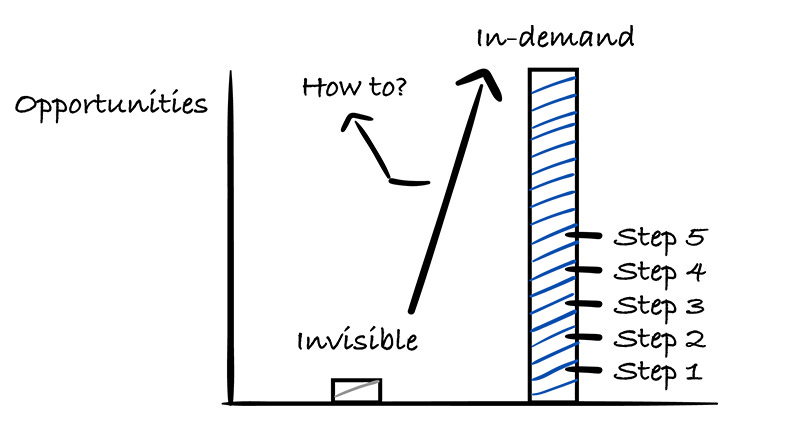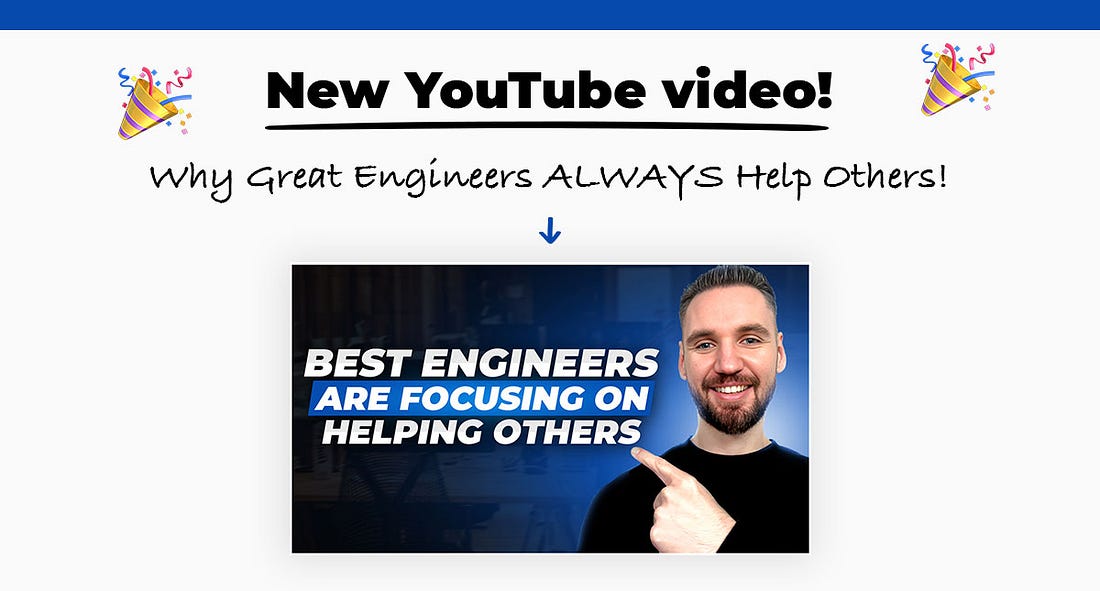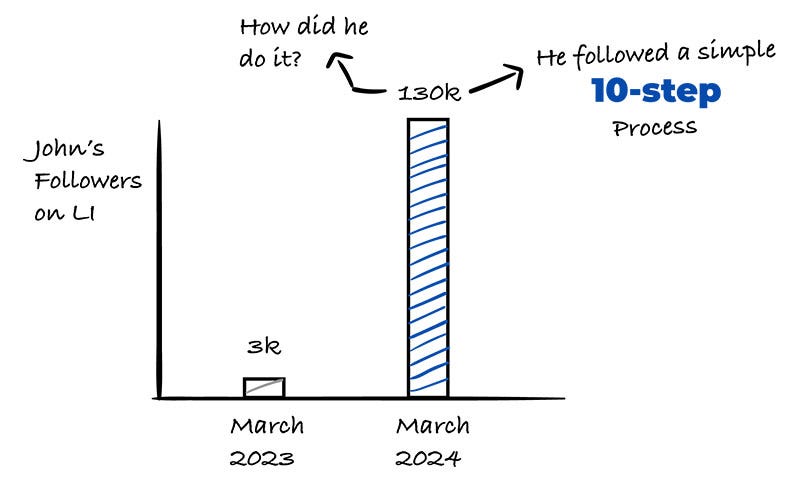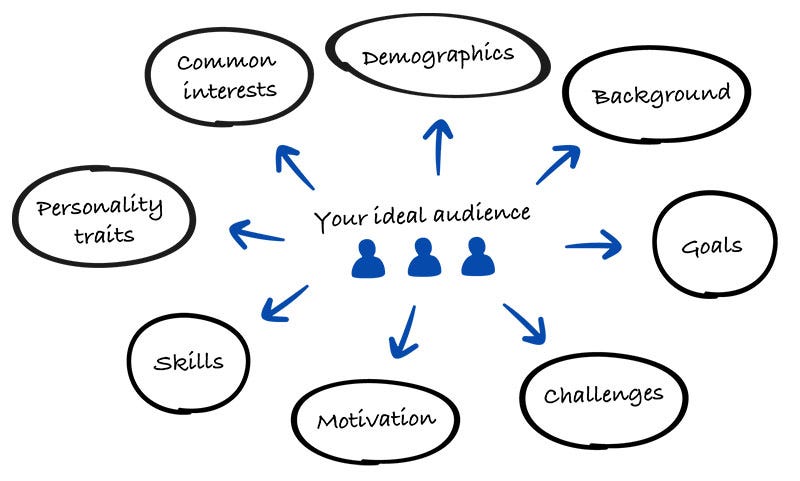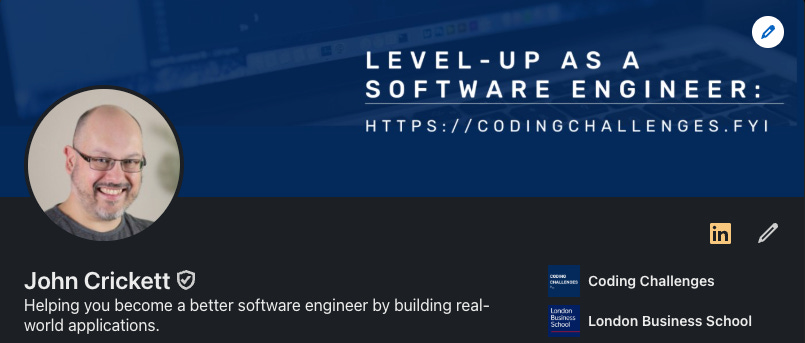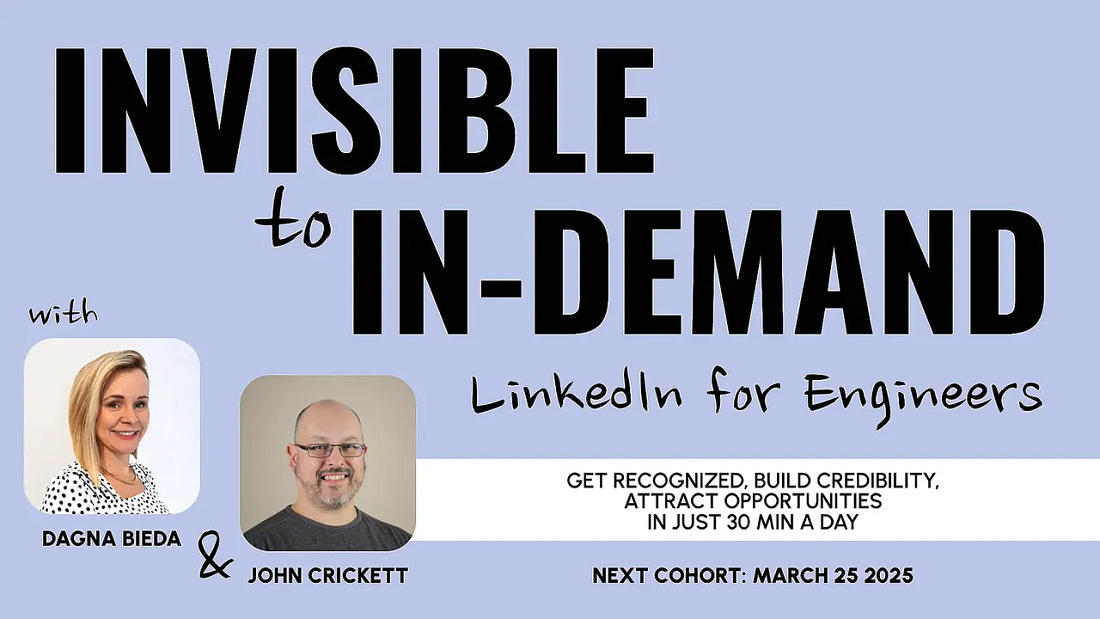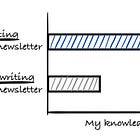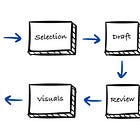From invisible to in-demand: LinkedIn for engineers and managers Part 1
- Gregor Ojstersek and John Crickett from Engineering Leadership <gregorojstersek@substack.com>
- Hidden Recipient <hidden@emailshot.io>
From invisible to in-demand: LinkedIn for engineers and managers Part 1Knowing how to present yourself well on LinkedIn can be the difference between 0 or 1000 opportunities!New video: Why Great Engineers ALWAYS Help Others!IntroI’ve been actively posting on LinkedIn for 2.5 years now → I started very simple, with 2 posts/week and as I got more comfortable, I increased the cadence, which I now post daily. It has given me so many opportunities that I wouldn’t have imagined it to be possible 2.5 years ago. From meeting like-minded people like John Crickett, Jordan Cutler, Caleb Mellas, Daniel Moka to name a few. To public speaking opportunities in San Francisco, Amsterdam, Katowice and Gdansk. And all the way to different full-time/fractional opportunities being offered to me, just because people found my posts to be insightful. Lucky for us, we have John Crickett today with us. He is a seasoned engineering professional who has worked both as a senior IC (Staff+) and a senior manager (VP, Head of Software Development). He is going to be sharing how to stop being invisible and be able to get opportunities on LinkedIn. This is going to be a 2-part article and the second part will be shared next week on Sunday. I have known John for a while now and we did a number of different collaborations together, including he’s been a guest author on this newsletter 3 times already! Here are the articles we did together:
And now, I am happy to have him on for the 4th and the 5th time. John, over to you! In March 2022, I accepted a new job → they found me through LinkedInI’ve been on LinkedIn since May 2003 and it’s been a great way to network and keep in touch with past colleagues, but this was the first time a recruiter had found me, though it looked like I’d landed a dream job. I was going to build and manage a growth engineering team - combining my interest in software engineering with my interest in marketing.
By the time I started the role in May 2022 the world had changed, layoffs were sweeping the tech industry and it was clear the new organisation was facing the possibility of layoffs too. By July 2022 I knew it was a case of when, not if. So excited by the ease with which I landed a dream job through LinkedIn - just by being on it - I started looking again, but things had changed. Fortunately, the value of a good network hadn’t and by the time I knew I was being laid off, I had a new role more or less lined up. That’s when I knew I needed to take LinkedIn more seriouslyReminded once again of the power of networking and the global reach of LinkedIn I knew I needed to take it more seriously. I started checking it every few days and making the odd post and a few comments. By February 2023 I’d begun to see that posting led to attention and facing the upcoming end of the contract I was in, I began to post more frequently. Then in March 2023 I went all in and committed to writing daily. I was going to turn my 3k followers into a way to get opportunities to come to me!
I’d launched the Coding Challenges newsletter and grew it to over 40,000 subscribers and I had lots of inbound opportunities. So how did I do it? I followed a simple 10-step process. Note the process is simple, following it isn’t always easy, it requires discipline and the willingness to show up every day consistently accepting that this is a long game (months to years, not days to weeks). Let’s dig into the process now. Step 1 - Determine your goal
I began by figuring out what I wanted to achieve. I suggest you take some time to do the same. Your goal might be to:
For example, I started out with a desire to build a personal brand as a software engineer that would help me find new opportunities for work. That could be that permanent, contract, consultancy or starting a new business - I didn’t know which it would be. I was vague, a better example would be: My goal is to build an audience of software engineers who want to improve their technical skills, learning how to build systems software via live training courses. Whichever it is for you, think carefully about how you can make it more specific. The more focused you can be the easier it will be to build a personal brand that works for you. Step 2 - Identify the relevant audience
To do that we’re going to identify your Ideal Audience Profile (IAP), using these three approaches:
You already have an audience on LinkedIn, look at who they are and look for any patterns.
Look at other people in your niche and see who they are reaching and why there is a fit. Look at the creators your existing audience is following and engaging with and dig into their strategies.
This may include demographic information such as age, gender, location, income level, or for B2B customers it can include firmographic details like company size, industry, and revenue. Once you have this information to create a profile of your ideal audience. You can then use that to create some personas that describe the person (or persons) you are writing to. A personal might look like this: Name - Senior Engineer, UK. Step 3 - Make your profile interesting to the audience → be credibleThere are four ways to follow someone on LinkedIn, there are buttons to follow them on each of:
For each of these sections, the ‘Headline’ of your LinkedIn profile is prominently displayed. That is your best spot to provide a potential follower with a reason to follow you. Create a compelling headline that gives them a reason to follow you! For example, I use: “Helping you become a better software engineer through coding challenges that build real applications.” This makes it clear who my audience are - software engineers - and what I do for them. Here it is: Step 4 - Identify people you want in your networkNow you know who you want in your audience, it’s time to find them! We can use LinkedIn’s search for that. To find people you want in your network via the search follow these two approaches.
For example: https://www.linkedin.com/search/results/content/?keywords=python
For example: https://www.linkedin.com/search/results/people/?keywords=python Step 5 - Reach out to people, build relationships and add them as connectionsThere are several ways to grow your network:
You have full control over your connections. You can accept/reject, remove or unfollow them. As we’re building a personal brand and a network is a key part of that, I encourage you to build connections with people who match your target personas.
When you first start out the quickest way to grow your audience is to send invites. Many people will simply find their target audience and send them a cold invite. Don’t! Find them and engage with them on the platform. Comment on their posts or their comments. Then after a couple of positive engagements send an invite and personalise it with a note (if possible).
As you become known for your content and personal brand you’ll begin to receive more and more invitations to connect. I review every one of these and accepted any that met my audience profile. I reject the rest. I’m engineering my social graph to be as focused as possible on my target audience.
To gain followers you need to be sharing interesting and insightful content and comments. We’ll look at that in the next few sections. For now, let’s make it easy for people to follow you by setting the default button on your profile to “Follow” instead of “Connect”. To do that visit this page: https://www.linkedin.com/mypreferences/d/followed and set it to Everyone on LinkedIn can follow you and make follow the primary. Step 6 - Share original content that resonates with your audienceGregor here again. Steps 6 to 10 will be shared next time in Part 2 → make sure to not miss the second part, where we will dive deeper into writing content, the overall structure and how to engage with people! To learn moreIf you wish to move from being invisible to in-demand together with a group of like-minded people → John Crickett and Dagna Bieda are hosting a cohort-based course. In the course, you’ll get a full roadmap to turning LinkedIn into an engine for career growth, visibility, and inbound opportunities. Dagna and John have been kind enough to give a discount to Engineering Leadership readers → use code ENGLEADER for 20% off or click here: Last wordsSpecial thanks to John Crickett for sharing his insights on this important topic with us! You can find him on LinkedIn and also check out his newsletter Coding Challenges. Make sure to stay tuned for the next part that will go out on Sunday, next week. Many interesting insights will be shared then! We are not over yet! We recently surpassed 120k subscribers and 1200 paid subscribers!Thank you for your readership and your continuous support 🙏 Starting to write this newsletter has been one of the best decisions I have made! If you are thinking of starting a newsletter yourself or you are already writing it → for the next 7 days, I have removed the paywall to 2 articles that would help you with that. Here they are: Thank you once again for your readership and your continuous support! Liked this article? Make sure to 💙 click the like button. Feedback or addition? Make sure to 💬 comment. Know someone that would find this helpful? Make sure to 🔁 share this post. Whenever you are ready, here is how I can help you further
Get in touchYou can find me on LinkedIn, X, YouTube, Bluesky, Instagram or Threads. If you wish to make a request on particular topic you would like to read, you can send me an email to info@gregorojstersek.com. This newsletter is funded by paid subscriptions from readers like yourself. If you aren’t already, consider becoming a paid subscriber to receive the full experience! You are more than welcome to find whatever interests you here and try it out in your particular case. Let me know how it went! Topics are normally about all things engineering related, leadership, management, developing scalable products, building teams etc. You're currently a free subscriber to Engineering Leadership. For the full experience, upgrade your subscription. |
Similar newsletters
There are other similar shared emails that you might be interested in:
